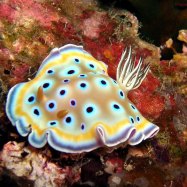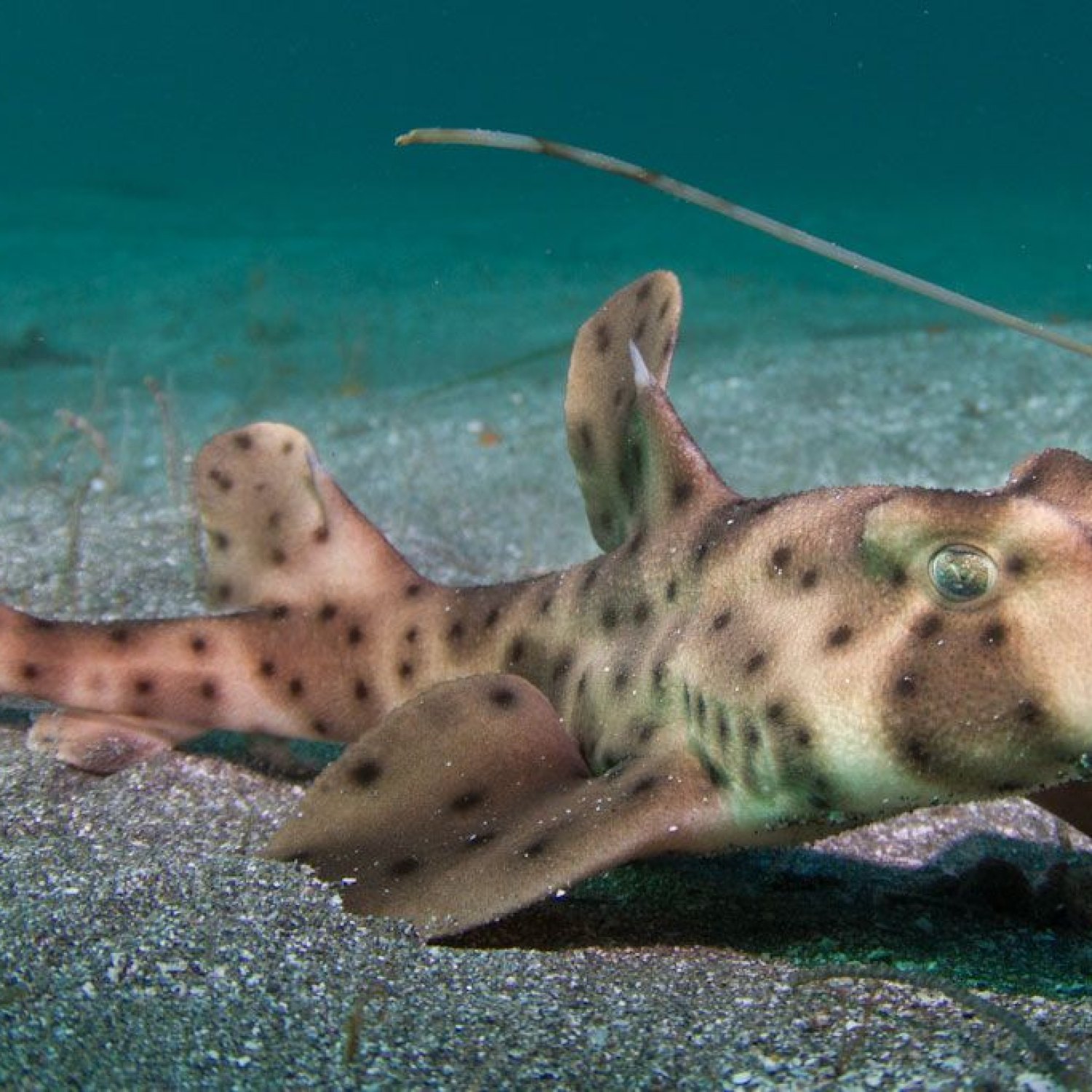
Horn Shark
Up to 3.3 feet (1 meter)
The Horn Shark, found along the Pacific Coast of North America, can reach up to 3.3 feet in length. Its distinct feature is its elongated body, broad head, and blunt snout, making it easily recognizable. Belonging to the Heterodontidae family, this species is a unique addition to the underwater world. #HornShark #PacificCoast #NorthAmerica #Heterodontidae
Animal Details Summary:
Common Name: Horn Shark
Kingdom: Animalia
Habitat: Coastal rocky reefs and kelp forests
The Mystery of the Horn Shark: A Predator of the Pacific Coast
The ocean is a vast and mysterious world, filled with creatures beyond our wildest imaginations. From the tiniest of plankton to the largest of whales, it is home to a diverse array of animals. One of these intriguing creatures is the horn shark (Heterodontus francisci), also known as the California horn shark.The horn shark is an elusive species that can be found in the Eastern Pacific Ocean, along the Pacific coast of North America Horn Shark. It has fascinated researchers for centuries with its unique appearance and behavior. In this article, we will delve into the world of the horn shark, detailing its scientific classification, habitat, feeding habits, and more.
A Creature of Proper Classification
The horn shark belongs to the Kingdom Animalia, the taxonomic classification for all animals. It is a member of the Phylum Chordata, which includes all animals with a backbone. Within this phylum, the horn shark falls into the class Chondrichthyes, or cartilaginous fish, which includes sharks, rays, and skates.Order and Family
One of the defining features of the horn shark is its distinctive head shape. This sets it apart from other sharks and places it in the order Heterodontiformes, which translates to "different-toothed" in Greek. This order consists of small, bottom-dwelling sharks that have unique teeth adaptations for crushing prey.The horn shark belongs to the family Heterodontidae, which includes seven species, all of which have a similar appearance and tooth structure Havashu. The other six species are found in the Indian, Pacific, and Atlantic Oceans, but the horn shark is unique to the Eastern Pacific.
Habitat and Distribution
The horn shark is primarily found along the Pacific coast of North America, from California in the United States to Mexico. It inhabits shallow coastal rocky reefs and kelp forests, where it can often be found resting on the seafloor.One of the reasons the horn shark is not commonly seen is that it is a nocturnal species. It spends its days hiding in crevices and caves, venturing out at night to hunt for food. This behavior makes it a challenge for researchers to study and understand.
Feeding Habits
The horn shark is a carnivorous species, meaning it feeds on other animals. Its strong, pointed teeth are perfect for crushing the shells of its prey, making it a feared predator of the Pacific coast.This species primarily feeds on bottom-dwelling invertebrates such as crabs, mollusks, and sea urchins. It also has a unique way of hunting, using its powerful jaws to suck out the prey from their shells. This technique has earned the horn shark the nickname "shell-crushing shark."
However, the horn shark is not an aggressive or fast-moving predator. Instead, it relies on stealth and patience to catch its prey. Its elongated body has a broad head and a blunt snout, allowing it to blend into its surroundings and ambush its prey.
Appearance and Physical Characteristics
The horn shark has a distinctive appearance, making it easily recognizable. It has a gray or brown coloration with dark spots, allowing it to camouflage on the ocean floor. Its body can also have a mottled or banded pattern, providing further camouflage.One of the horn shark's most notable features is its name-sake, the horns on its dorsal fins. These horns are unique to each individual and can vary in length and shape. They are used as a defensive mechanism to protect the shark from predators and other threats.
The horn shark's body shape is also distinct, with an elongated body, thick skin, and small, rounded fins. It can grow up to 3.3 feet (1 meter) in length, with females typically being larger than males.
Dangers and Threats
The horn shark is not considered a dangerous species to humans. It is a small and slow-moving shark with a non-aggressive nature. However, it can deliver a painful bite if provoked or threatened, using its powerful jaws and teeth.Despite not being a target for commercial fishing, the horn shark does face some threats. Its slow reproductive rate and small litter size make it vulnerable to overfishing. Additionally, its habitat is also at risk, with coastal reefs and kelp forests being impacted by human activities and climate change.
The Horn Shark and Conservation Efforts
The horn shark is currently listed as "Near Threatened" on the International Union for Conservation of Nature (IUCN) Red List. Its conservation status is closely monitored, with research efforts focusing on population numbers and threats to its habitat.In the United States, the state of California has set regulations on the catch of horn sharks, including size limits and restrictions on taking pregnant females. However, there is still much to learn about this enigmatic species to ensure its long-term survival.
A Glimpse into the World of the Horn Shark
The horn shark is a fascinating and mysterious creature that inhabits the Pacific coast of North America. With its unique appearance, hunting techniques, and behavior, it has captured the attention of researchers and nature enthusiasts alike.Despite facing threats to its existence, conservation efforts and ongoing research continue to shed light on the horn shark's world. We can only hope that by understanding and appreciating this species, we can help ensure its continued presence in our oceans for generations to come.

Horn Shark
Animal Details Horn Shark - Scientific Name: Heterodontus francisci
- Category: Animals H
- Scientific Name: Heterodontus francisci
- Common Name: Horn Shark
- Kingdom: Animalia
- Phylum: Chordata
- Class: Chondrichthyes
- Order: Heterodontiformes
- Family: Heterodontidae
- Habitat: Coastal rocky reefs and kelp forests
- Feeding Method: Carnivorous
- Geographical Distribution: Eastern Pacific Ocean
- Country of Origin: United States (California), Mexico
- Location: Pacific Coast of North America
- Animal Coloration: Gray or brown with dark spots
- Body Shape: Elongated body with a broad head and a blunt snout
- Length: Up to 3.3 feet (1 meter)
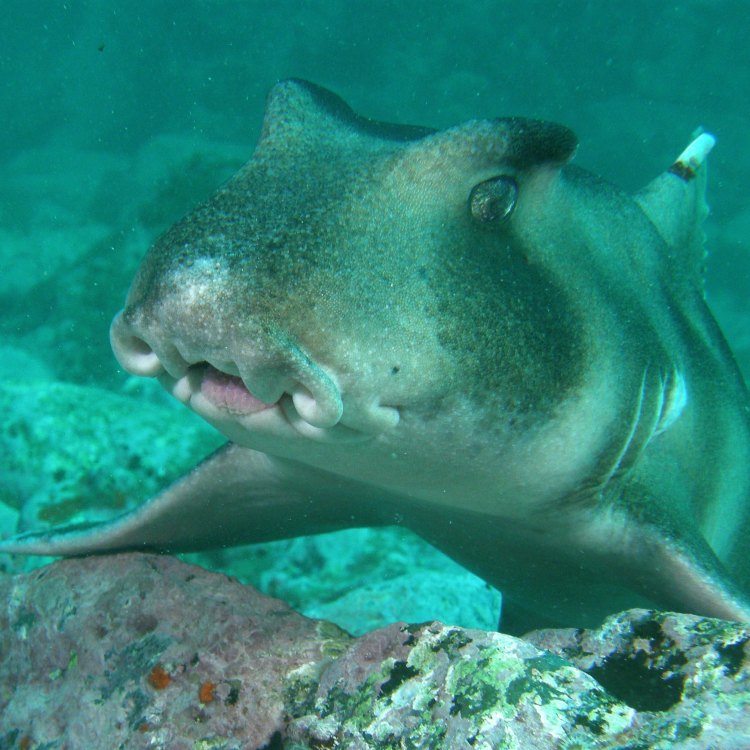
Horn Shark
- Adult Size: 1.5 to 3.3 feet (0.5 to 1 meter)
- Average Lifespan: Up to 25 years
- Reproduction: Oviparous (lays eggs)
- Reproductive Behavior: Females lay eggs in rocky crevices
- Sound or Call: Does not produce sound or call
- Migration Pattern: Resident species, limited movements
- Social Groups: Solitary
- Behavior: Nocturnal and sedentary
- Threats: Habitat loss, overfishing
- Conservation Status: Least Concern
- Impact on Ecosystem: Plays a role in the balance of reef ecosystems
- Human Use: Fished for its meat and fins
- Distinctive Features: Two small dorsal fins with spines, horn-like protuberances above its eyes
- Interesting Facts: Can survive out of water for extended periods by using its muscular pectoral fins to 'walk' on the seabed
- Predator: Larger sharks and other predatory fish
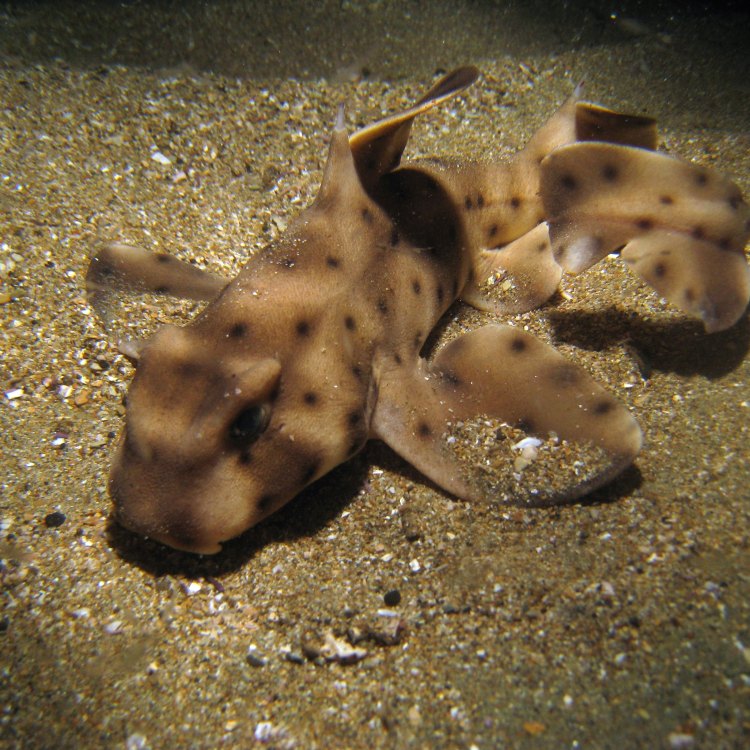
Heterodontus francisci
The Fascinating World of the Horn Shark
The ocean is home to an incredible array of creatures, both big and small. And while some may be more well-known than others, there are many hidden gems lurking beneath the waves. One such creature is the horn shark, a unique species with many interesting features and behaviors. In this article, we'll dive into the fascinating world of the horn shark and discover what makes it such a special part of our marine ecosystems PeaceOfAnimals.Com.The horn shark, also known by its scientific name Heterodontus francisci, is a small species of shark that can be found in the eastern Pacific Ocean, from California to Baja California. They are typically found in shallow waters, close to rocky reefs where they can hide and feed. As adults, they can grow to a size of 1.5 to 3.3 feet (0.5 to 1 meter) and can live for up to 25 years.
Like many other shark species, the horn shark is oviparous, which means that they lay eggs instead of giving birth to live young. Female horn sharks lay their eggs in rock crevices, where they are protected from predators and have a steady supply of oxygenated water. This allows them to develop and hatch safely Houdan Chicken.
Interestingly, the reproductive behavior of the horn shark is quite unique. Unlike other shark species that lay their eggs individually, the female horn sharks will lay multiple eggs in one crevice, creating a communal "nursery." This not only provides safety in numbers but also allows the eggs to receive adequate amounts of oxygen as the mother continuously pumps water through the crevices.
While many creatures in the ocean are known for producing sounds or calls, the horn shark is not one of them. This species does not produce any sounds, making them completely silent animals. This may be due to their sedentary and solitary nature, as they do not need to communicate with other individuals.
Horn sharks are also not known for their long migratory patterns. They are primarily resident species, meaning they typically stay in one area for most of their lives. However, some horn sharks have been observed moving slightly further away from their home reefs during the winter months to search for prey. Despite this, their movements are still quite limited compared to other shark species.
As solitary creatures, horn sharks usually operate alone. They are nocturnal animals, meaning they are most active at night and spend their days resting in rocky crevices. This behavior helps them to avoid predators such as larger sharks and other predatory fish, which are more active during the day.
Unfortunately, like many marine species, horn sharks face a number of threats in their natural habitat. One of the main threats is habitat loss due to human activity. As humans continue to develop and expand coastal areas, important habitats for horn sharks are destroyed. Additionally, overfishing poses a threat, as horn sharks are often caught as bycatch in fisheries targeting other species.
Despite these threats, the International Union for Conservation of Nature (IUCN) lists the horn shark as a species of Least Concern. This means that, while they are facing threats, their populations are still stable and not at immediate risk of extinction. However, continued conservation efforts are still important to ensure their survival.
So, why are horn sharks so important to our marine ecosystems? While they may seem like a small and insignificant part of the ocean, these sharks play a vital role in maintaining a balanced and healthy ecosystem. As apex predators, they help to control the population of their prey, which in turn prevents any one species from dominating and causing harm to the ecosystem.
In addition to their ecological significance, horn sharks also have some interesting features that make them stand out from other shark species. Their most distinctive feature is perhaps their two small dorsal fins, each bearing a sharp spine. These spines serve as a form of defense against predators and can also be used to wedge themselves in crevices for added protection.
Another unique feature of the horn shark is the horn-like protuberances above its eyes, which give this species its name. These "horns" are actually enlarged scales and are believed to help protect the shark's eyes while hunting and exploring rocky areas. In fact, these sharks have excellent eyesight and rely heavily on it to find food.
But perhaps the most surprising fact about the horn shark is its ability to survive out of water for extended periods of time. Using their muscular pectoral fins, these sharks can "walk" on the seabed and even travel short distances on land. This adaptation allows them to survive in tide pools and other shallow areas where water may recede.
Despite their unique features and behaviors, the horn shark is not immune to predators. As mentioned earlier, larger shark species and other predatory fish pose a threat to these sharks in the ocean. However, humans are also predators of the horn shark, as they are often fished for their meat and fins.
In conclusion, the horn shark may not be the most well-known or studied species, but it is undoubtedly a fascinating and important part of our ocean ecosystems. Its unique features, behaviors, and role as an apex predator make it a species worthy of our attention and protection. As we continue to explore and learn about the wonders of the ocean, let us also remember to respect and preserve the creatures that call it home.
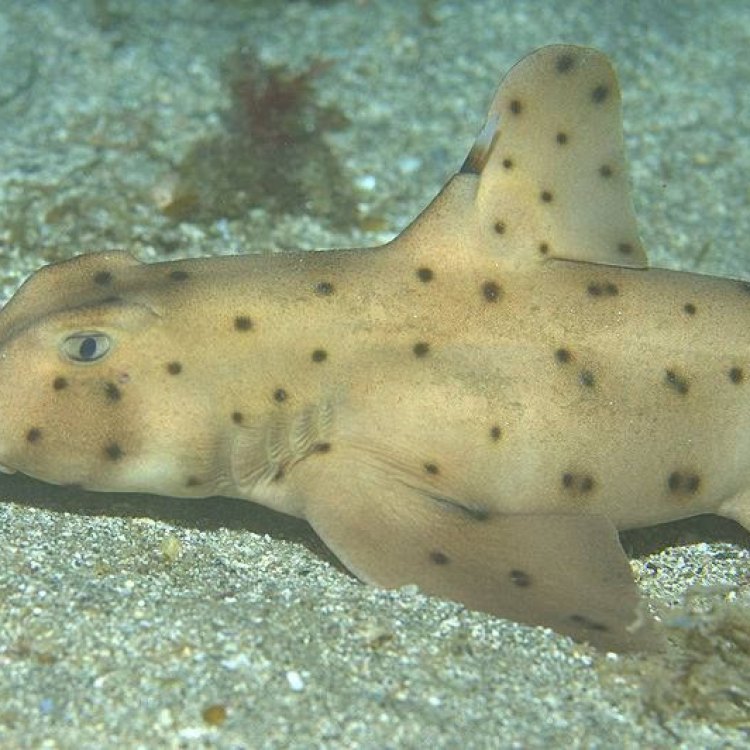
The Mystery of the Horn Shark: A Predator of the Pacific Coast
Disclaimer: The content provided is for informational purposes only. We cannot guarantee the accuracy of the information on this page 100%. All information provided here may change without prior notice.








